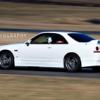17" Vs 18" Wheels For Motorsport
Announcements
-
Similar Content
-
Latest Posts
-
By Murray_Calavera · Posted
You won't need to do that if your happy to learn to tune it yourself. You 100% do not need to do that. It is not part of the learning process. It's not like driving on track and 'finding the limit by stepping over the limit'. You should not ever accidently blow up an engine and you should have setup the ECU's engine protection to save you from yourself while you are learning anyway. Plenty of us have tuned their own cars, myself included. We still come here for advice/guidance/new ideas etc. What have you been doing so far to learn how to tune? -
Put the ECU's MAP line in your mouth. Blow as hard as you can. You should be able to see about 10 kPa, maybe 15 kPa positive pressure. Suck on it. You should be able to generate a decent vacuum to about the same level also. Note that this is only ~2 psi either way. If the MAP is reading -5 psi all the time, ignition on, engine running or not, driving around or not, then it is severely f**ked. Also, you SHOULD NOT BE DRIVING IT WITHOUT A LOAD REFERENCE. You will break the engine. Badly.
-
Could be correct. Meter might be that far out. Compare against a known 5 ohm 1% resistor.
-
@Murray_Calavera If I were an expert I wouldn't be in here looking for assistance. I am extremely computer literate, have above average understanding on how things should be working and how they should tie together. If I need to go to a professional tuner so be it, but I'd much rather learn and do things myself even if it means looking for some guidance along the way and blowing up a few engines. @GTSBoy I was hoping it would be as simple as a large vacuum leak somewhere but I'm unable to find anything, all lines seem to be well capped or going where they need to be, and when removed there is vacuum felt on the tube. It would be odd for the Haltech built in MAP to be faulty, the GTT tune I imported had it enabled from the start, I incorrectly assumed it was reading a signal from the stock MAP, but that doesn't exist. After running a vacuum hose to the ECU the signal doesn't change more than 0.2 in either direction. I'll probably upload a video of my settings tomorrow, as it stands I'm able to daily drive, but getting stuttering when giving it gas from idle, so pulling away from lights is a slow process of revving it up and feathering the clutch until its moving, then it will accelerate fine. It sounds like I need to get to the bottom of the manifold pressure issue, but the ignition timing section is most intimidating to me and will probably let a pro do that part. Tomorrow I'll try a different vacuum line to T off of, with any luck I selected one that was already bypassed during the DBW swap. (edit: I went out and did it right now, the line I had chosen did appear to have no vacuum on it, it used to go to the front of the intake, I've now completely blocked that one off at the bracket that holds several vacuum lines by the firewall. I T'd into the vacuum line that goes from that bracket to the vacuum pump at the front of the car, but no change in the MAP readings). Using the new vacuum line that has obvious vacuum on the hose, im still only getting readings between -6.0 and -5.2. I'm wondering why the ECU was detecting -5.3 when nothing was connected to the MAP nipple and ECU MAP selected as the source. @feartherb26 I do have +T in the works but wanted to wait until Spring to start with that swap since this is my good winter AWD vehicle. When removing the butterfly, did it leave a bunch of holes in the manifold that you needed to plug? I thought about removing it but assumed it would be a mess. I notice no difference when capping the vacuum line to it or letting it do its thing. This whole thing has convinced me to just get a forward facing manifold when the time comes though.
-
Update: tested my spark plugs that are supposed to be 5ohms with a 10% deviation and one gave me a 0 ohms reading and the rest were 3.9ohm<, so one bad and the others on their way out.
-





Recommended Posts
Create an account or sign in to comment
You need to be a member in order to leave a comment
Create an account
Sign up for a new account in our community. It's easy!
Register a new accountSign in
Already have an account? Sign in here.
Sign In Now